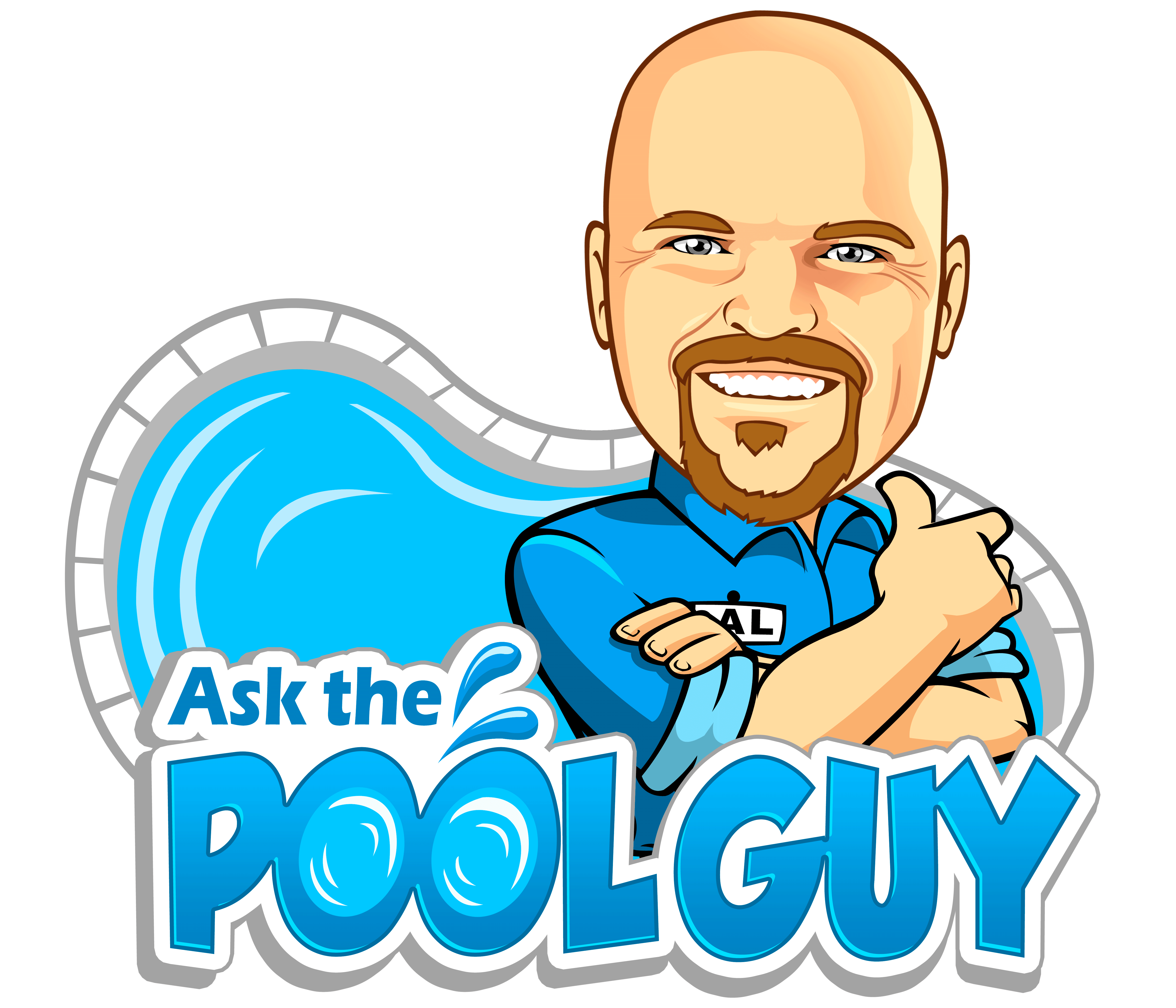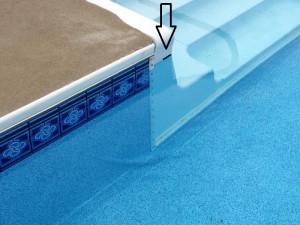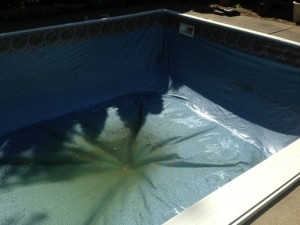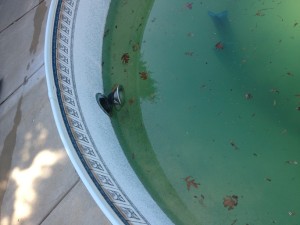LOOK: Visually check for obvious signs of leaking first. Are there any leaks or drips at the equipment pad? What about the filter, pump, heater or any connections? Is the ground wet anywhere on the pad or around the equipment pad? Are there any wet areas near your patio, on the lawn? Any soft spots? Do you have a vinyl liner pool? Can you see any tears or material separations at the seams, around the fittings, the light, steps, and returns?
Determining the Location of the Leak:If you determine that your pool is losing water, turn off the filtration system and note where the water stops dropping. Vinyl Liner pools need to have water in them at all times! Stop this test if you have a liner pool and the water level is dropping rapidly. Start adding water and call a pool professional.
If the water stops at the bottom of skimmer opening, the leak is probably in the skimmer or filtration system (Including the pipes). If the water stops at the light, the leak is probably at the light housing.If the water drops below the light, then there may be a leak in the drain at the bottom the pool.If you suspect you have a leak in the filtration system: If you see air bubbles in the return line’s water when the pool’s pump is running, there’s a leak in the suction side of the filtration system. Is the pump basket lid on tight? Is the lid o-ring lubed and in good condition? If the pool is losing more water while the pump is running, the leak is on the return line side of the system. Check the waste or backwash line for running water? If you suspect you have a leak in the Skimmer, light, liner: If you see something that looks like a crack, gap or tear.
Using a dye test solution or some of your pH indicator test reagent, drop near it with pump shut off and water still. See if the dye is sucked into the crack, gap or tear.
Fixing leaks- Skimmer Leaks: The most common leak is a separation between the plastic skimmer and the concrete pool. This is easily fixed with pool putty. Light Leaks- Often the conduit pipe will come apart, break or separate from the niche. This is difficult to patch. There are various methods to patch a bad conduit connection. A two part epoxy that dries hard, with putty, silicone or caulk are ways to fix this problem.

Liner Leaks- Simply, patch it with a vinyl liner patch kit. If underwater, wet patch kit.

Many leaks are not detectable using the suggestions above, which means it’s time to call a professional. Leak detection experts will have technology to help them diagnose and find your leak. From underwater microphones to electronic pulse equipment many leaks can be found and repaired without causing major disruption. Pressure testing uses compressed air to pressurize a pipe. The air displaces the water in the pipe until it reaches the leak, at which point bubbles escape from the hole to reveal the problem area. Or, where a pipe fails to maintain a constant air pressure, a leak exists. Special television cameras can be snaked through plumbing pipes to spot leaks. By injecting air into a pipe, then listening electronically for sounds of air escaping with a super sensitive microphone. You should expect to pay $250+ for high-tech leak detection, depending upon the location and complexity of the problem. Repairs are then quoted based on what is found.
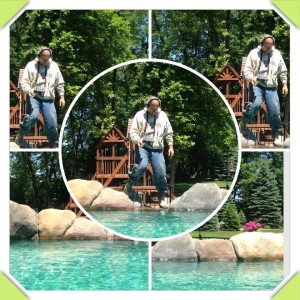
Understanding Plumbing Leaks- Pool plumbing system breakdown:

The basic configuration of a swimming pool plumbing and filtration system is pretty simple. Water is pulled from the pool through the skimmer and main drains in the swimming pool by the pool pump. The water travels through the underground plumbing to the equipment pad where it passes through the pump strainer basket and is then pushed through the filter and heater as well as any other peripherals such as chlorinators or chlorine generators, and is eventually pushed back to the pool through the return lines.
